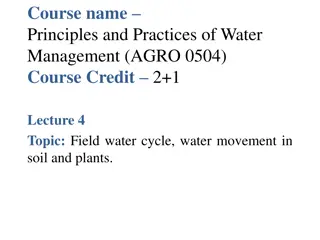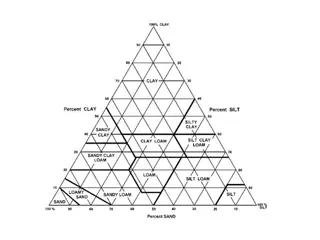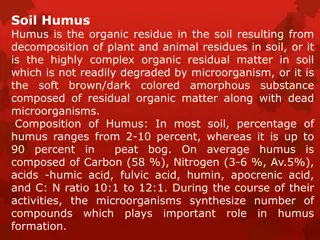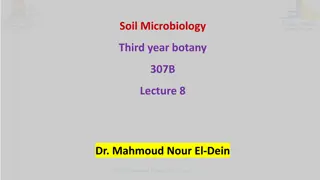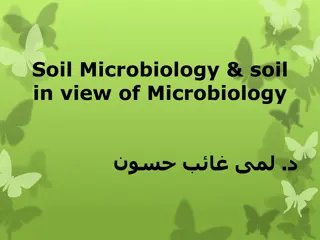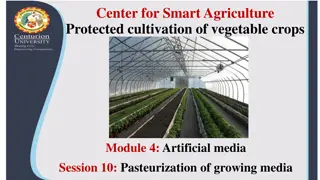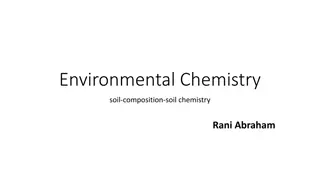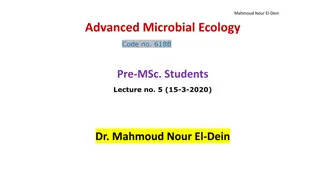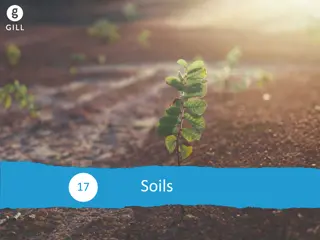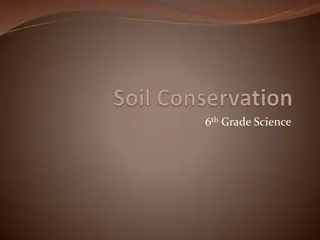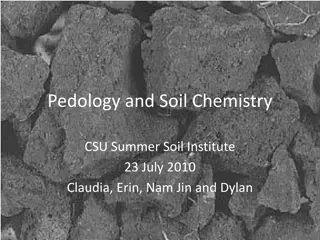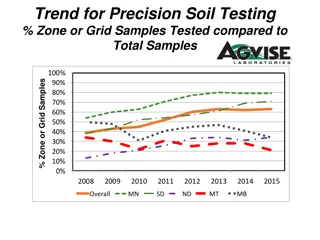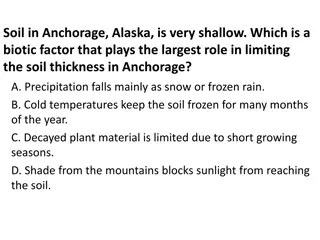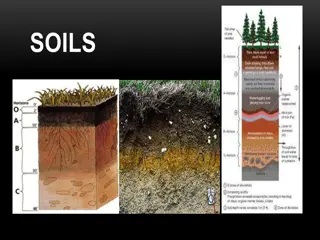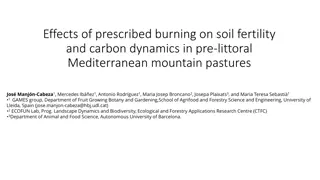
Influence of Growth Media on E. coli Survival in Soil
The research findings suggest that the growth media used did not significantly impact the survival dynamics or duration of Escherichia coli (E. coli) in soil under static conditions. Despite slight effects on early survival patterns, the overall survival of E. coli in soils was not substantially influenced by the type of growth media. The study observed that E. coli populations in soil remained stable up to 42 days, with a biphasic shoulder survival model best fitting the data. Different growth media affected the lag, logarithmic, and stationary phases of E. coli, with tryptic soy agar and broth supporting higher growth rates compared to poultry pellet extract.
Download Presentation

Please find below an Image/Link to download the presentation.
The content on the website is provided AS IS for your information and personal use only. It may not be sold, licensed, or shared on other websites without obtaining consent from the author. Download presentation by click this link. If you encounter any issues during the download, it is possible that the publisher has removed the file from their server.
E N D
Presentation Transcript
Research Updates: Research Updates: Objective 2 Objective 2 Growth Media of Escherichia coli Does Not Affect Its Survival in Soil under Static Conditions
Research Highlights Research Highlights The growth media used influenced lag, logarithmic, and stationary phases of E. coli. E. coli populations remained above the limit of detection up to 42 days in the soil. A biphasic shoulder survival model best fit E. coli in soils for all media types. Growth media did not affect E. coli survival dynamics or duration in soils.
Average growth of E. coli TVS 353 in Average growth of E. coli TVS 353 in tryptic soy agar, tryptic soy broth, and poultry pellet extract tryptic soy broth, and poultry pellet extract growth media tryptic soy agar, growth media Growth media significantly affected the E. coli TVS 353 growth rate. Tryptic soy agar and tryptic soy broth both supported higher E. coli growth rates in media, carrying capacity, and a shorter lag phase compared with poultry pellet extract.
Average growth of E. coli TVS 353 in Average growth of E. coli TVS 353 in tryptic soy agar, tryptic soy broth, and poultry pellet extract tryptic soy broth, and poultry pellet extract growth media tryptic soy agar, growth media These similarities may be attributed to available nutrients between the growth mediums, as tryptic soy agar and tryptic soy broth are developed for optimal growth conditions of E. coli.
Survival of E. coli TVS 353 in Survival of E. coli TVS 353 in TSA TSA- -R, TSB R, TSB- -R, and PPE R, and PPE- -R in soil R in soil E. coli populations in soil did not decline until day 3 and then showed significant declines between days 3 and 14 compared with levels seen between days 0 and 3. A tail was observed between 14 and 42 days when E. coli populations were stable.
Survival of E. coli TVS 353 in Survival of E. coli TVS 353 in TSA TSA- -R, TSB R, TSB- -R, and PPE R, and PPE- -R in soil R in soil Although results of the current study did find that growth media slightly impacted the early (days 0 to 3) survival patterns of E. coli TVS 353 in soils, the data do not support that growth media type affected the survival duration of E. coli TVS 353 in soils.
More Information More Information Check out Check out our paper! our paper! Keith R. Schneider Keith R. Schneider Professor of Food Science University of Florida keiths29@ufl.edu Cameron A. Bardsley Cameron A. Bardsley Research Food Technologist USDA-ARS cameron.bardsley@usda.gov This work is supported by the Specialty Crops Research Initiative [grant no. 2020-51181-32157] from the USDA National Institute of Food and Agriculture. Any opinions, findings, conclusions, or recommendations expressed in this presentation are those of the speakers and do not necessarily reflect the view of the U.S. Department of Agriculture.

